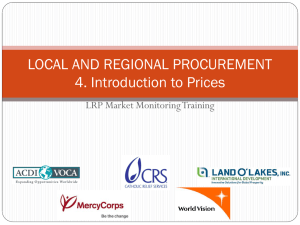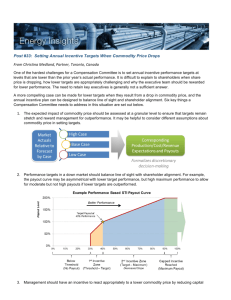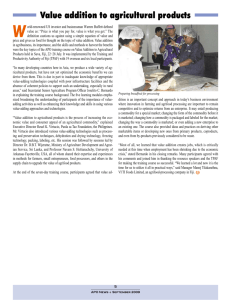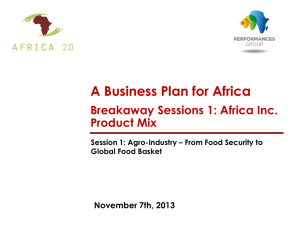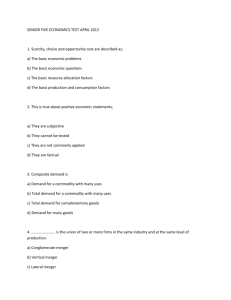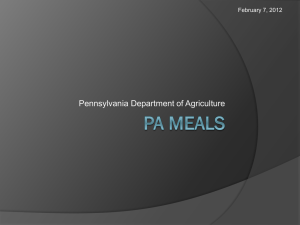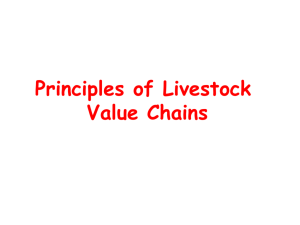Secondary Data
advertisement
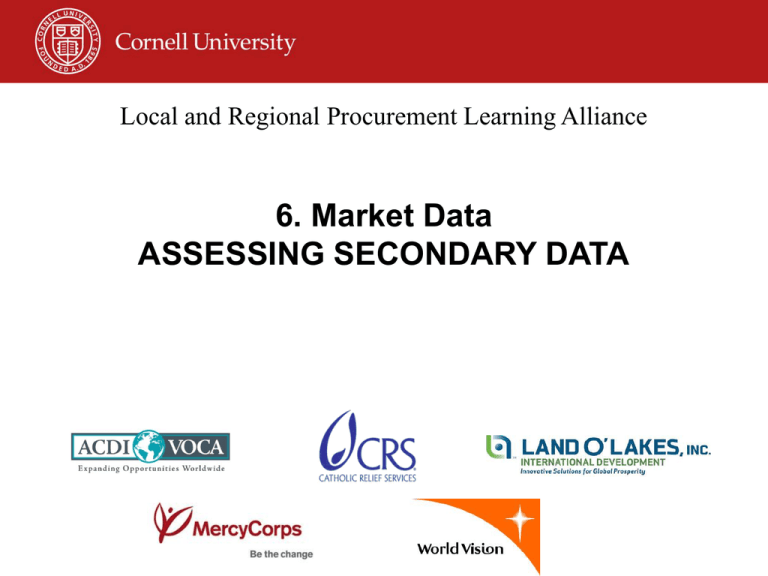
Local and Regional Procurement Learning Alliance 6. Market Data ASSESSING SECONDARY DATA Using secondary data: • Conserves time & resources: utilize secondary data whenever possible; collect primary data to fill gaps • Requires identification of existing sources: price data is often collected by governments, international organizations, national agricultural research services (NARS) – Secondary data may be available for wholesale and/or retail prices; we need both – After requesting price data, always clarify collection method • Requires that primary data be collected using same procedures as secondary data: this approach ensure comparability and combinability Price data collected by a governmental or other agency • Check agricultural ministries, trade ministries, national statistical offices for agricultural price data • Look online, in local news media, historical publications and archives • Search first, then arrange a visit with data collection agency Examples of online sources • Start here: – List of country-specific statistical agencies http://www.ssb.no/en/links/ • Government databases: – Bangladesh’s Department of Agricultural Marketing: http://www.dam.gov.bd/jsp/advancedSearchReport.jsp – Benin (French only): http://www.insae-bj.org/ • NARS databases: – Check with CGIAR centers, WFP country offices, FAO country offices • Data aggregators: – Famine Early Warning System Network (FEWS NET): http://www.fews.net/Pages/markettrade.aspx?loc=3&l=en Understanding the methods used by governmental or other agencies to collect data • Examine methodology, surveys (if available), prior to meeting with agency official • Ask officials how, where and when data are collected with a series of targeted questions • Only use data collected monthly or more often • Understanding previously used methods is critical for process replication and data comparability Example questions to ask agency official • From what markets are these prices collected? • Are the prices in the dataset retail prices? Wholesale prices? Farm-gate prices? • From whom are these prices collected? • For what volume are the prices collected? • For each commodity price that the CO will track: what are the commodity’s color, size, quality, and condition? • How frequently are these prices collected? • Are prices averages over time or across several traders? Obtaining secondary data • Find out how quickly secondary data will be available • Try to obtain data for the last 24 months, but ideally 60 months • Consider offering to make your data available to the secondary data provider • If your CO is heavily dependent on delayed secondary data, consider collecting some primary data for monitoring purposes During the interview: Map secondary price data collection processes by commodity Type of price Number of respondents in each market? Buying or selling price? Purchase Commodity volumes of quality and prices condition? reported? Example: Commodity 1: Maize Example: Wholesale Example: 5 Examples: Example: Selling 90kg bag Commodity 1: ________ Retail Commodity 1: ________ Wholesale Commodity 2: ________ Retail Commodity 2: ________ Wholesale Commodity color and size? Example: Example: Dried maize White in grain maize form Number of times data collected per month? Within each month, on what day are prices collected? Are the prices averages across traders and/or time? If so, explain calculation. Example: Two times Example: The first and third Monday of every month Example: No – each price is reported separately.
